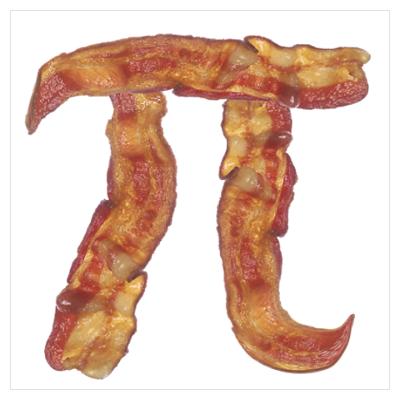The Wrack
The Wrack is the Wells Reserve blog, our collective logbook on the web.
The Wrack is the Wells Reserve blog, our collective logbook on the web.
 The following was published in the Biddeford-Saco Journal Tribune Sunday edition, 3/15/2015.
The following was published in the Biddeford-Saco Journal Tribune Sunday edition, 3/15/2015.
I hope you made time for pi Saturday morning. Not the apple or blueberry kind (pie), but the number we usually abbreviate 3.14 and denote by the Greek letter p (pi). After all, yesterday was March 14, in the year 2015: 3/14/15. And at 9:26am and 53 seconds, it was officially Time for Pi.
Did you stand up and applaud 3.141592653, the first nine digits of the most famous, never-ending decimal number in human history? I hope you did, because the 3/14/15 Pi Day won’t come again for another hundred years.
To celebrate the occasion, I had bacon and eggs for breakfast on Pi Day. After mopping up the last of the round yellow yolks, I reached for my tape measure. My plate was 830 millimeters around, 264 millimeters wide (note to everyone in America: metric is so much easier to use). I divided one by the other and magically, there was that number in the calculator: 3.14. My 7-year-old was impressed, or at least he pretended to be. He grew more excited when the same number emerged from his cereal bowl, his water cup, even from around the dining table.
On a roll, we looked for more circles. A hula hoop in the basement: pi. The drum of our washing machine: pi. The wheels on the car go pi, pi, pi. Quick, boy, to the Internet, I said. Look up the distance from Earth to the Sun (92.9 million miles). We multiplied it by two to get the width of our orbit, and then divided that into the length of Earth’s orbit (584 million miles). And there it was again: 3.14.
Sure, with each different circular calculation, the numbers diverged after the .14. But by that point, we’re talking mere thousandths. “Close enough for government work,” as they say. (Except that government work, when it comes to NASA, has to be a thousand times more accurate than that if they want to, for instance, put a satellite into orbit around an asteroid.) The error was ours, not pi’s: my tape measure doesn’t go smaller than millimeters, so we couldn’t be too exact. And even if we could have measured more exactly, and used more powerful calculators, we still wouldn’t get the same answer every time, because pi is always an approximation.
Because pi goes on forever; there’s no end to reach. Even though computers have now calculated pi out past the twelve trillionth digit, even they can’t hit it exactly. There’s no way to EXACTLY describe pi, except to say that it is always the ratio of a circle’s edge (its circumference) to the length of a line drawn across its middle (its diameter).
Three point one-four paragraphs ago, I called pi the most famous, never-ending decimal number in human history. But is it even human? Whether we’re here to measure it or not, the circumference of a circle is always, always, always three times the length of its middle (its diameter), plus a little bit. A circle drawn 2,000 years ago by the Ancient Greek mathematicians who discovered the world of geometry has the same pi ratio as one drawn today. A circumference and the diameter of a circle on Pluto, or one drawn at the other end of the galaxy, or even a billion years in the past or the future, will still reduce down to that constant 3.14.
Perfectly reliable and yet completely unknowable, pi is one of those great Absolute Truths that seem to only exist in mathematics. It’s one of only a few beautiful round pearls buried in the sands of space and time. How can you not love it, even envy it a little?
At the Wells Reserve at Laudholm, where I work, our scientists collect data on the natural world. We undertake the painstaking, steady work of discovery every day. We measure, we check, we measure again; we have to, because we deal with the messy, wet world of coastal nature.
While it’s not impossible, it’s unlikely that we’ll ever discover anything quite like pi in our work. The universal constants, the unbreakable laws, have mostly been found already. Only a few may remain, and, of course, they’re the hardest ones to figure out (and currently require budgets a thousand times larger than ours).
But you never know. If pi can lurk underneath my bacon and eggs, maybe some other secret of the universe, some key to it all, lies beneath the sands and waters of the Wells Reserve. We’ll keep an eye out, and if we ever do find anything so amazing, well: there’s always room for more pi.
Nik Charov is president of Laudholm Trust, the nonprofit partner of the Wells National Estuarine Research Reserve in Wells, Maine. His Sunday column, “Between Two Worlds,” ventures forth from somewhere in between art and science, past and future, 3.1 and 3.2. More at wellsreserve.org/twoworlds.